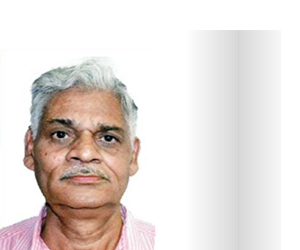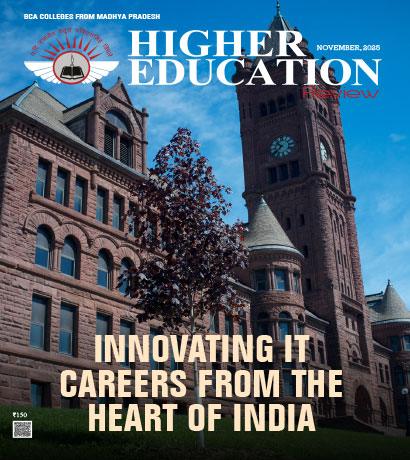Public Private Partnerships (PPPs) in Higher Education: Encircling the Global Education Sector

R K Mishra, Director, Institute of Public Enterprise, Hyderabad
Global education is expanding rapidly. There are more students demanding a wider variety of affordable programs to meet higher-quality standards. Given its value, it is inevitable that the private sector will actively seek to become more involved in this endeavor. Institutions are seeking to compete internationally and domestically; governments are exploring alternative approaches to meet the demand for international co-operation in education and research. Another response to demand has been the development of programs delivered nationally. There are now approximately one million students in India following reputable transnational education programs in higher education alone and almost all of these programs involve some form of public-private partnership.
While Governments and educational institutions are working to address the aspirations of the people for inclusive development, it has become equally important to strengthen the role of higher education in the production and dissemination of highly specialized knowledge in a wide variety of fields which may not have any immediate practical use, but may have a long term economic, social and civilization value. The need for improving the quality of education, even while accommodating more and more numbers in quantity, is another challenge that has emerged in the new competitive environment. While in India, the broad policy framework for the development of higher education has been laid down by the National Policy on Education and the decisions taken by the Central Government and apex level regulatory agencies are binding on the State Governments and Universities, the States could still have its own policy perspective.
Globally, the concept of PPP in the context of higher education still needs to be strengthened. Towards this, the Foreign Educational Institution (Regulation of Entry and Operation) Bill, 2010 would pave the way for cross-border partnership at a macro level that create a lasting impact on the society in terms of creation of jobs, cross-border employment, cross-pollination of cultures, technology transfer, sharing of best practices and bi-lateral relations. International Universities could play a significant role in expanding access to high quality higher education in the country. Students would prefer to enroll into a University, which offers an International exposure through faculty and student exchange programs at an Indian campus. From the University perspective, it can create a sustainable business model through larger enrollments. International Universities can enter the Indian market through collaboration with an Indian Institutes. Few examples of Foreign Partnerships in Education in India are:
- Staffordshire University has partnered with Jadavpur University and the University of Madras to offer Masters Degrees
- The Indian Institute of Science (IISc), Bangalore and Cardiff University, Wales, UK, have partnered to co-operate in training and research in the fields of Science and Technology
- The Maastricht Economic Research Institute on Innovation and Technology (MERIT) at the University of Maastricht, Netherlands, has tied up with the Centre for Development of Advanced Computing (C-DAC), Mumbai, in July 2006, to start a two-year project termed FLOSSWORLD, supported by the European Union (EU) in the area of open source software
Governments are exploring alternative approaches for international co-operation in education and research. The underlying principle for government involvement in education depends on the factors influencing such as (i) Externalities (ii) Capital Market Imperfections (iii) Agency Concerns (iv) Equity and (v) Information Asymmetries. Government has a variety of policy instruments at its disposal in order to meet its policy objectives which relate to ownership/delivery, funding and regulation. PPPs recognize that governments can meet their policy objectives using different service delivery models - not just 'traditional' public finance/public delivery model. Most forms of PPPs in education come from service delivery initiatives that can be broadly categorized in the form of private management of public educational institutes, contracting with private institutions for education delivery, private information/ testing services, outsourcing of non-core functions and outsourcing of delivery by public tertiary institutions.
Likewise, the infrastructure PPPs also play a significant role in education which include mostly the private finance initiatives for construction and maintenance of core and non-core educational assets. Private leasing of public institutions/ tertiary institution facilities and providing equipment and maintenance of IT laboratories in the educational institutions also are major finance initiatives in PPPs which are supply driven. However, when we analyze the existing PPPs, demand side finance initiatives generally consist of publicly financed vouchers and scholarships, privately financed vouchers and scholarships, publicly provided student loans and subsidies for private institutions. Some strategic partnerships in PPPs that are devised in education are private involvement in curriculum development and quality assurance. Some Universities and Institutions also have MoUs for research collaborations, on-job-training, Public/private tertiary institution affiliations and social marketing as part of PPPs.
Though there has been considerable amount of experimentation with some success stories in school education and in the vocational-education and skill-development sectors, very few PPP models have been tried out in the field of higher education. Hence, there is every need to strengthen PPPs in global higher education sector.
Dr. R K Mishra
He is currently the Director, Senior Professor and ONGC Subir Raha Chair Professor at the Institute of Public Enterprise. Dr Mishra is a graduate of International Management Program, SDA Bocconi, Milan, Italy and has had research stints at London Business School and Maison Des Sciences De L' Hommes, Paris.
Dr P S Janaki Krishna
She is an Associate Professor (Biotechnology) at Institute of Public Enterprise. She has obtained a Phd.D. in Botany. She has worked as 'Scientific Collaborator' at Timiryazev Institute of Plant Physiology, Moscow and has about 25 years of experience in research, teaching, technology management and grassroots development and has expertise in dealing with multi stakeholder groups.
While Governments and educational institutions are working to address the aspirations of the people for inclusive development, it has become equally important to strengthen the role of higher education in the production and dissemination of highly specialized knowledge in a wide variety of fields which may not have any immediate practical use, but may have a long term economic, social and civilization value. The need for improving the quality of education, even while accommodating more and more numbers in quantity, is another challenge that has emerged in the new competitive environment. While in India, the broad policy framework for the development of higher education has been laid down by the National Policy on Education and the decisions taken by the Central Government and apex level regulatory agencies are binding on the State Governments and Universities, the States could still have its own policy perspective.
Globally, the concept of PPP in the context of higher education still needs to be strengthened. Towards this, the Foreign Educational Institution (Regulation of Entry and Operation) Bill, 2010 would pave the way for cross-border partnership at a macro level that create a lasting impact on the society in terms of creation of jobs, cross-border employment, cross-pollination of cultures, technology transfer, sharing of best practices and bi-lateral relations. International Universities could play a significant role in expanding access to high quality higher education in the country. Students would prefer to enroll into a University, which offers an International exposure through faculty and student exchange programs at an Indian campus. From the University perspective, it can create a sustainable business model through larger enrollments. International Universities can enter the Indian market through collaboration with an Indian Institutes. Few examples of Foreign Partnerships in Education in India are:
- Staffordshire University has partnered with Jadavpur University and the University of Madras to offer Masters Degrees
- The Indian Institute of Science (IISc), Bangalore and Cardiff University, Wales, UK, have partnered to co-operate in training and research in the fields of Science and Technology
- The Maastricht Economic Research Institute on Innovation and Technology (MERIT) at the University of Maastricht, Netherlands, has tied up with the Centre for Development of Advanced Computing (C-DAC), Mumbai, in July 2006, to start a two-year project termed FLOSSWORLD, supported by the European Union (EU) in the area of open source software
Governments are exploring alternative approaches for international co-operation in education and research. The underlying principle for government involvement in education depends on the factors influencing such as (i) Externalities (ii) Capital Market Imperfections (iii) Agency Concerns (iv) Equity and (v) Information Asymmetries. Government has a variety of policy instruments at its disposal in order to meet its policy objectives which relate to ownership/delivery, funding and regulation. PPPs recognize that governments can meet their policy objectives using different service delivery models - not just 'traditional' public finance/public delivery model. Most forms of PPPs in education come from service delivery initiatives that can be broadly categorized in the form of private management of public educational institutes, contracting with private institutions for education delivery, private information/ testing services, outsourcing of non-core functions and outsourcing of delivery by public tertiary institutions.
Likewise, the infrastructure PPPs also play a significant role in education which include mostly the private finance initiatives for construction and maintenance of core and non-core educational assets. Private leasing of public institutions/ tertiary institution facilities and providing equipment and maintenance of IT laboratories in the educational institutions also are major finance initiatives in PPPs which are supply driven. However, when we analyze the existing PPPs, demand side finance initiatives generally consist of publicly financed vouchers and scholarships, privately financed vouchers and scholarships, publicly provided student loans and subsidies for private institutions. Some strategic partnerships in PPPs that are devised in education are private involvement in curriculum development and quality assurance. Some Universities and Institutions also have MoUs for research collaborations, on-job-training, Public/private tertiary institution affiliations and social marketing as part of PPPs.
Though there has been considerable amount of experimentation with some success stories in school education and in the vocational-education and skill-development sectors, very few PPP models have been tried out in the field of higher education. Hence, there is every need to strengthen PPPs in global higher education sector.
Dr. R K Mishra
He is currently the Director, Senior Professor and ONGC Subir Raha Chair Professor at the Institute of Public Enterprise. Dr Mishra is a graduate of International Management Program, SDA Bocconi, Milan, Italy and has had research stints at London Business School and Maison Des Sciences De L' Hommes, Paris.
Dr P S Janaki Krishna
She is an Associate Professor (Biotechnology) at Institute of Public Enterprise. She has obtained a Phd.D. in Botany. She has worked as 'Scientific Collaborator' at Timiryazev Institute of Plant Physiology, Moscow and has about 25 years of experience in research, teaching, technology management and grassroots development and has expertise in dealing with multi stakeholder groups.

